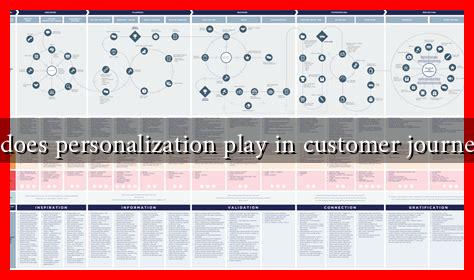-
Table of Contents
- What Role Does Personalization Play in Customer Journey Mapping?
- The Importance of Customer Journey Mapping
- Understanding Personalization
- How Personalization Enhances Customer Journey Mapping
- 1. Improved Customer Insights
- 2. Tailored Experiences
- 3. Increased Engagement
- 4. Enhanced Customer Loyalty
- Case Studies: Successful Personalization in Action
- Challenges in Implementing Personalization
- Conclusion
What Role Does Personalization Play in Customer Journey Mapping?
In today’s competitive marketplace, understanding the customer journey is crucial for businesses aiming to enhance customer experience and drive loyalty. One of the most effective strategies to achieve this is through personalization. Personalization in customer journey mapping allows businesses to tailor their interactions based on individual customer preferences, behaviors, and needs. This article explores the significance of personalization in customer journey mapping, its benefits, and practical applications.
The Importance of Customer Journey Mapping
Customer journey mapping is the process of visualizing the steps a customer takes when interacting with a brand. It encompasses every touchpoint, from initial awareness to post-purchase follow-up. By mapping this journey, businesses can identify pain points, opportunities for improvement, and areas where personalization can enhance the customer experience.
Understanding Personalization
Personalization refers to the practice of tailoring products, services, and communications to meet the specific needs and preferences of individual customers. This can be achieved through various means, including:
- Data collection and analysis
- Segmentation of customer demographics
- Behavioral tracking
- Utilizing AI and machine learning algorithms
According to a study by Epsilon, 80% of consumers are more likely to make a purchase when brands offer personalized experiences. This statistic underscores the importance of integrating personalization into customer journey mapping.
How Personalization Enhances Customer Journey Mapping
Personalization plays a pivotal role in enhancing customer journey mapping in several ways:
1. Improved Customer Insights
Personalization allows businesses to gather detailed insights into customer preferences and behaviors. By analyzing data from various touchpoints, companies can create more accurate customer personas, leading to better-targeted marketing strategies.
2. Tailored Experiences
With personalization, businesses can create tailored experiences that resonate with individual customers. For example, Netflix uses algorithms to recommend shows based on viewing history, significantly enhancing user engagement and satisfaction.
3. Increased Engagement
Personalized content and communications lead to higher engagement rates. Emails that include the recipient’s name and relevant product recommendations have a higher open and click-through rate. According to Campaign Monitor, personalized emails can generate up to six times higher transaction rates.
4. Enhanced Customer Loyalty
When customers feel understood and valued, they are more likely to remain loyal to a brand. Personalization fosters a sense of connection, encouraging repeat purchases and long-term relationships. A study by Accenture found that 91% of consumers are more likely to shop with brands that provide relevant offers and recommendations.
Case Studies: Successful Personalization in Action
Several companies have successfully integrated personalization into their customer journey mapping, yielding impressive results:
- Amazon: By analyzing customer purchase history and browsing behavior, Amazon provides personalized product recommendations, which account for 35% of its total sales.
- Spotify: The music streaming service uses personalized playlists, such as “Discover Weekly,” to enhance user experience, resulting in increased user retention and satisfaction.
- Sephora: The beauty retailer offers personalized product recommendations based on customer preferences and past purchases, leading to a significant increase in conversion rates.
Challenges in Implementing Personalization
While personalization offers numerous benefits, businesses may face challenges in its implementation:
- Data privacy concerns: Customers are increasingly wary of how their data is used, necessitating transparent data practices.
- Integration of technology: Businesses must invest in the right tools and technologies to effectively gather and analyze customer data.
- Maintaining consistency: Ensuring a consistent personalized experience across all touchpoints can be challenging.
Conclusion
Personalization is a powerful tool in customer journey mapping that can significantly enhance customer experience, engagement, and loyalty. By leveraging data and technology, businesses can create tailored experiences that resonate with individual customers. As demonstrated by successful case studies, the integration of personalization into customer journey mapping is not just a trend but a necessity for brands aiming to thrive in a competitive landscape.
In summary, personalization plays a crucial role in understanding and improving the customer journey. By focusing on individual preferences and behaviors, businesses can foster deeper connections with their customers, ultimately driving growth and success.
For more insights on customer journey mapping and personalization, visit Forbes.


